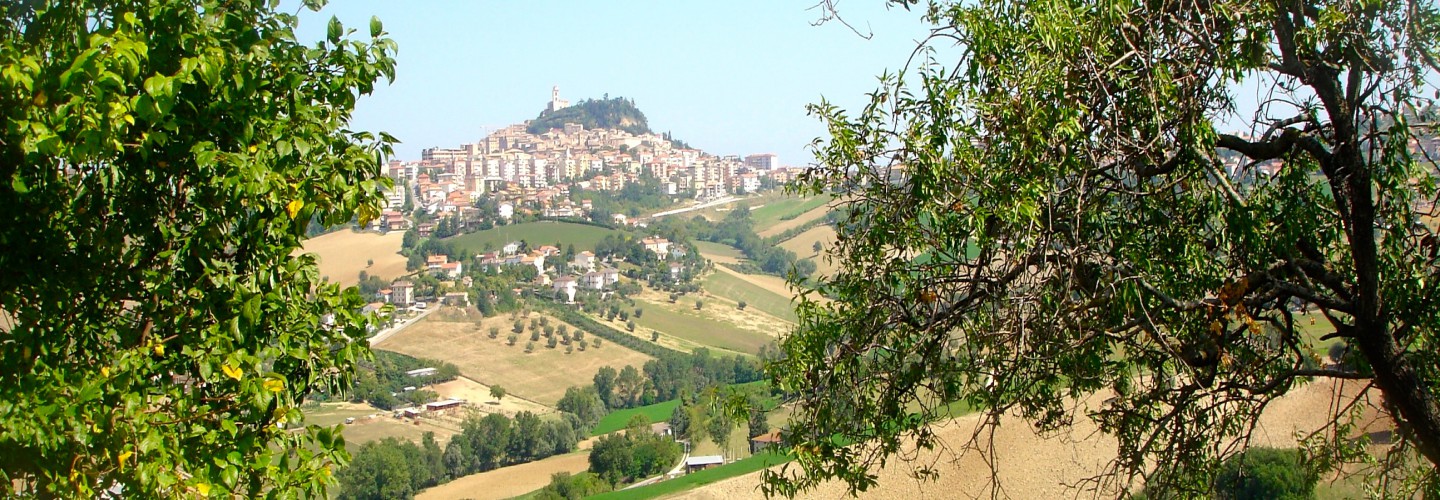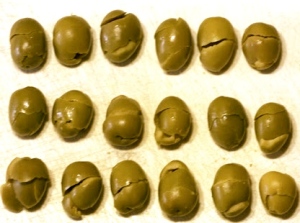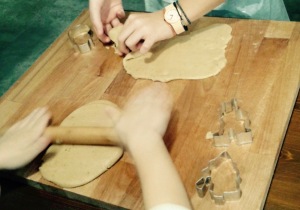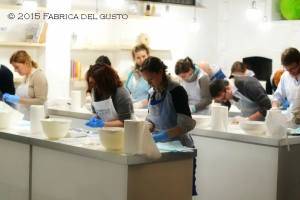We Italians are famous abroad for some customs that distinguish us immediately. A typical example are the gestures of hands while talking.  CNN talked about this attitude, even trying to explain the meaning of the most common ones.
CNN talked about this attitude, even trying to explain the meaning of the most common ones.
Another typical and pretty unique Italian ritual is “fare la scarpetta”, a colloquial expression that in the Italian language is close to the heart of everyone who has enjoyed a delicious plate of pasta with sauce.
Scarpetta means “little shoe” in Italian. Most Italian families’ have their own stories about the practice – but, first, let’s clarify what it is. “Fare la scarpetta” means when you find yourself in the situation you’ve just finished the last forkful of your favorite spaghetti, and now you’re dying to relish that last little bit of sauce still left on your plate? You’ve exhausted all efforts to scoop it up with your cutlery, and you’ve completely ruled out the possibility of sneaking the plate up to your mouth for a quick swipe, unnoticed. So now what? You assure yourself, it’s not just gluttony – it’s truly a pity to waste such a gift of God! You look at that plate – still warm and irresistible – and you know that your relationship with it is not over! If you’re Italian – anywhere from very young to more senior age – the answer is obvious: bread! Bread is the solution and there is a method – there’s even a word for it: “scarpetta!”

“Fare la scarpetta”…aka:”making the little shoe”
So, you simply take a piece of bread from the basket – which part of the bread you choose is important and strategic – and propel it into the sauce. At this very moment, that piece of bread transforms into a tiny shoe – and the sauce is the soft ground, if you will, in which your little shoe is sinking.  Italy could be divided into two groups: those who do the scarpetta, and those (few) who don’t. Some people do so only furtively – just enough to show solidarity; more brazen food lovers just dig in with no regrets. A good scarpettaro – that is, the doer of the deed – will leave the plate with nearly no trace of sauce – which is of great help, as we all know, for the dishwasher. This is not only an essential part of an Italian meal, but it is seen as a way to extend the pleasure of the repast.
Italy could be divided into two groups: those who do the scarpetta, and those (few) who don’t. Some people do so only furtively – just enough to show solidarity; more brazen food lovers just dig in with no regrets. A good scarpettaro – that is, the doer of the deed – will leave the plate with nearly no trace of sauce – which is of great help, as we all know, for the dishwasher. This is not only an essential part of an Italian meal, but it is seen as a way to extend the pleasure of the repast.
During my stay in Senigallia, I got to taste a unique dish: the Brodetto of Senigallia, a true specialty of the local cuisine.
Needless to say, I could not resist and I finally dipped my fingers in the sauce!

The traditional “Brodetto of Senigallia”
I asked our friends Silvia and Donatella, owners of Fabrica del Gusto, the famous cooking school of Fabriano, to teach me the secrets of this unique dish, to be able to cook it to my friends in New York and also teach them how to celebrate the tradition of “scarpetta”. Here’s what they’ve recommended…
“As for all fish recipes the most important secret is to use freshest fish as possible. Trationally fishermen used to use the unsold remaining catch of the day, which was often the least valuable. Today at the market we bought: clams, sea cicadas, cuttlefish, squid, dogfish, sole, red mullet and ‘moletti’ (a variety of oily fish).

The freshet caught of the day…
Let parsley, garlic, and a bit of onion and chilli fry in a pot with olive oil. Then add the cuttlefish cut into chunks and fade with some white wine vinegar and a lot of tomato sauce watered down with some fish broth. The sauce should be abundant, since it then will be used to cook all the fish.

Cooking the fish in a pot with the sauce
Let it cook for about two hours (you can avoid cooking all this time simply scalding the cuttlefish on a grill for about ten minutes and then adding them to the sauce) adding squids at the end (the last fifteen minutes).

Scalding the cuttlefish to shorten the cooking time
Then take a pot to serve, preferably cast iron or earthenware, and prepare the base with oil, garlic and parsley. Then add a first layer of shellfish (mussels and clams) and add the fish that needs more time to cook (dogfish). Add a little sauce and then the cuttlefish and squids.

Nice detail on the edge of this beautiful plate, stating: “The plate of the Brodetto”
Finally, make a layer with the sole, mullet and ‘moletti’ and you end up with shellfish. Cover evenly with the sauce and cook for a few more minutes until the crustaceans turn pink.

Toasted bread
Before serving, sprinkle with parsley and accompain with toasted homemade bread”…the ones you will need to “make the scarpetta”!
Enjoy!!!

Buon Appetito!!!
A special thanks to our friends from Fabrica del Gusto in Fabriano and to Silvia Rovinelli, the author of this delicious recipe!
Please note to make this delicious recipe, our friends recommend “Olio Clara”: a very special olive oil blend made with 100% local olives from Le Marche! To find out more about it, please click here
 …an-easy-to-make and nutritious dish!:-)
…an-easy-to-make and nutritious dish!:-)






 Start making the dough:
Start making the dough:

 The history of ‘Olives Ascolane’ is long…Even in ancient times, pickled olives (green and black) were considered as a very nutritious meal. In fact, the Roman soldiers always carried some in their saddlebags for the toughest moments.
The history of ‘Olives Ascolane’ is long…Even in ancient times, pickled olives (green and black) were considered as a very nutritious meal. In fact, the Roman soldiers always carried some in their saddlebags for the toughest moments.















































